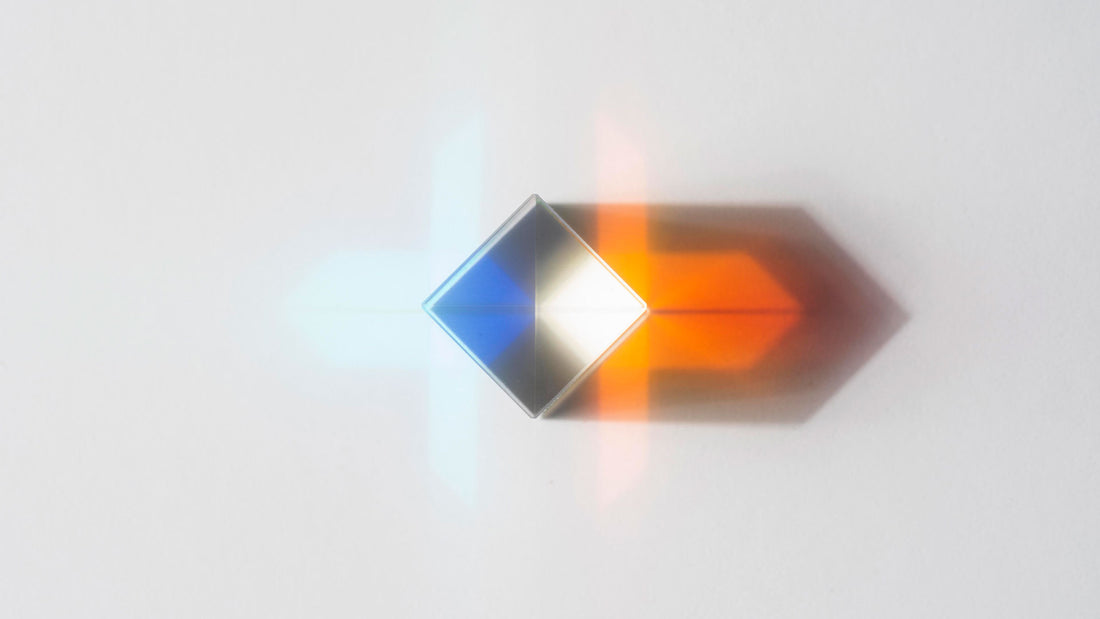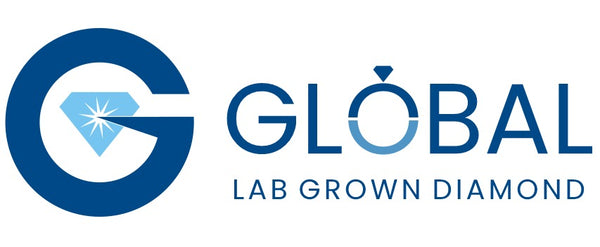
CVD Diamond: Shaping the Future of Diamonds: A Comprehensive Guide to CVD Diamonds
Share
CVD diamonds – you may have heard the term thrown around, but what exactly are they? For those unacquainted with the world of diamonds, CVD stands for "Chemical Vapor Deposition," and these gems are at the forefront of the lab-grown diamond revolution.
If you're intrigued by diamonds, their environmental footprint, and cost efficiency, then CVD diamonds should definitely be on your radar. In this comprehensive guide, we'll unravel the mystique surrounding these stones, exploring what makes them unique and helping you navigate the world of CVD diamonds to find your perfect fit.
What Are CVD Diamonds?
In simple terms, CVD diamonds are a product of human ingenuity. Unlike their natural counterparts, which take billions of years to form deep within the Earth, CVD diamonds are meticulously grown in controlled laboratory settings.
CVD, or Chemical Vapor Deposition, is the ingenious process that brings these gems to life.

Are CVD Diamonds Authentic?
CVD diamonds are often referred to as synthetic diamonds because they are not naturally occurring. However, in terms of their physical properties and chemical composition, they are indistinguishable from their naturally formed counterparts. To the naked eye, a CVD diamond is virtually identical to a mined diamond.
In fact, the Federal Trade Commission (FTC) ruled in 2018 that synthetic diamonds are, for all practical purposes, equivalent to natural diamonds. Both are unequivocally diamonds.
Synthetic Diamonds vs. Mined Diamonds
Lab-grown diamonds, including CVD diamonds, are occasionally termed synthetic diamonds. This term simply indicates that they were cultivated in a laboratory rather than extracted from the Earth's crust.
Both lab-grown and mined diamonds are genuine diamonds, differing only in their origins.

The Distinction Between CVD Diamonds and Diamond Simulants
It's important to differentiate CVD diamonds from diamond simulants like moissanite, white sapphire, and cubic zirconia. These simulants, while resembling diamonds, possess different chemical compositions and are not true diamonds. CVD diamonds, on the other hand, are genuine diamonds in every sense of the word.

Crafting CVD Diamonds
The creation of CVD diamonds is a fascinating and innovative process. It begins with a thin 'seed' diamond placed within a sealed chamber and exposed to high temperatures, typically around 800°C.
A carbon-rich gas mixture, often composed of hydrogen and methane, is then introduced into the chamber. These gases are ionized to break down their molecular bonds, allowing the pure carbon to bond with the diamond seed.
Over time, carbon atoms accumulate, forming atomic bonds with the diamond seed. This process results in the growth of a new, larger diamond, indistinguishable from those found in nature.
The Growth Rate of CVD Diamonds
The growth rate of CVD diamonds is deliberate, as it relies on exceptionally high temperatures and pressure conditions. Typically, the process advances at a rate of 0.1-10 microns per hour for larger surfaces (smaller surfaces grow more slowly). On average, it takes about a month to produce a one-carat CVD diamond.

Not All Lab-Grown Diamonds Are CVD Diamonds
CVD is a relatively recent innovation in the world of lab-grown diamonds. Prior to this method, labs primarily utilized the High-Pressure High Temperature (HPHT) approach. However, CVD offers a more efficient means of diamond cultivation compared to the extremely high-pressure and high-temperature conditions required by HPHT, approximately 1500°C and around 1.5 million pounds of pressure per square inch. As a result, HPHT diamonds may now register as moissanite when tested with modern diamond testers.
The Historical Evolution of CVD Diamonds
The story of CVD diamonds dates back to 1955 when General Electric first created a lab-grown diamond. DeBeers later acquired the technology, leading to a temporary disappearance of CVD diamonds. GE/DeBeers utilized the HPHT method for diamond growth. This paved the way for subsequent technological advancements, eventually culminating in the development of CVD diamonds in the 1980s.

The Clarity of CVD Diamonds
While one might expect CVD diamonds to emerge as flawless, they, like their natural counterparts, exhibit a range of quality. This is due to the inherent variability in lab conditions that mimic the natural diamond formation process. After growth, a CVD diamond undergoes the same certification process as a natural diamond, with its color, cut, clarity, and carat weight evaluated and graded.
Are CVD Diamonds Affordable?
Compared to mined diamonds, CVD diamonds are generally more budget-friendly, costing approximately 20–30% less. This affordability arises from several factors, including the extensive expenses associated with mining, the complex supply chain of mined diamonds, and historical pricing manipulations.
Natural diamonds must be located and excavated from the Earth, then transported and sold to various intermediaries, leading to increased costs. CVD diamonds bypass many of these steps, resulting in a more accessible price point.
Additional Benefits of CVD Diamonds
The cost advantages of CVD diamonds extend beyond monetary savings. The process of mining diamonds is fraught with ethical and environmental challenges. "Conflict diamonds" or "blood diamonds" are illicitly traded mined diamonds that fund conflict in war-torn regions, and some diamond mines operate under harsh conditions, leading to worker exploitation and human rights violations. Additionally, diamond mining has significant ecological consequences.
CVD diamonds, free from these concerns, offer substantial benefits over natural diamonds, including environmental responsibility and ethical sourcing.
Is a CVD Diamond Right for You?
The decision to choose a CVD diamond ultimately rests with you. However, given their environmental and ethical advantages, as well as their cost-effectiveness, an increasing number of diamond enthusiasts are turning to lab-grown options.
If you seek guidance or have questions about CVD diamonds, we're here to assist you. Your journey to discover the perfect ethical, exquisite gem begins with exploring the world of CVD diamonds.
